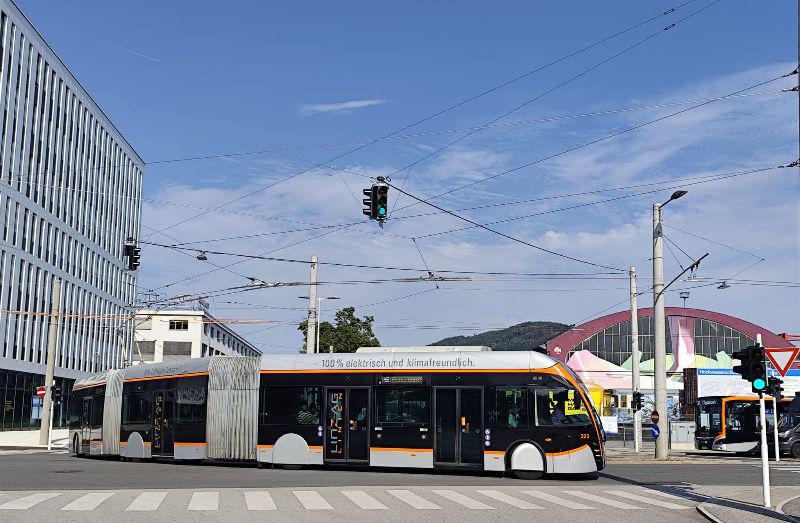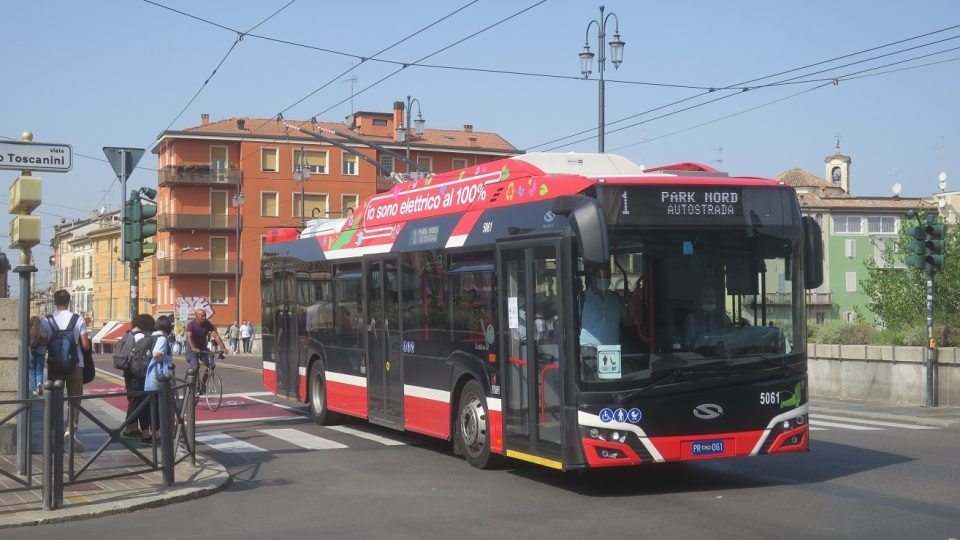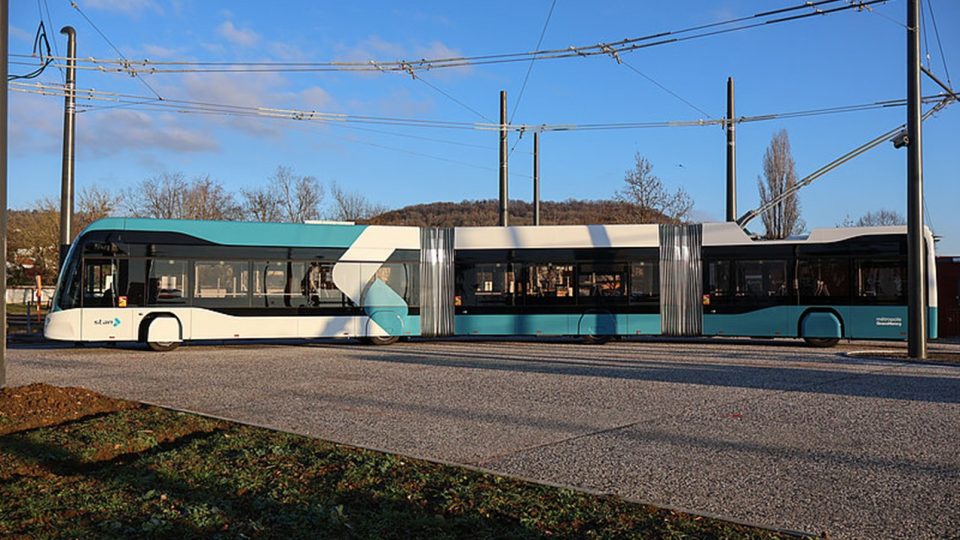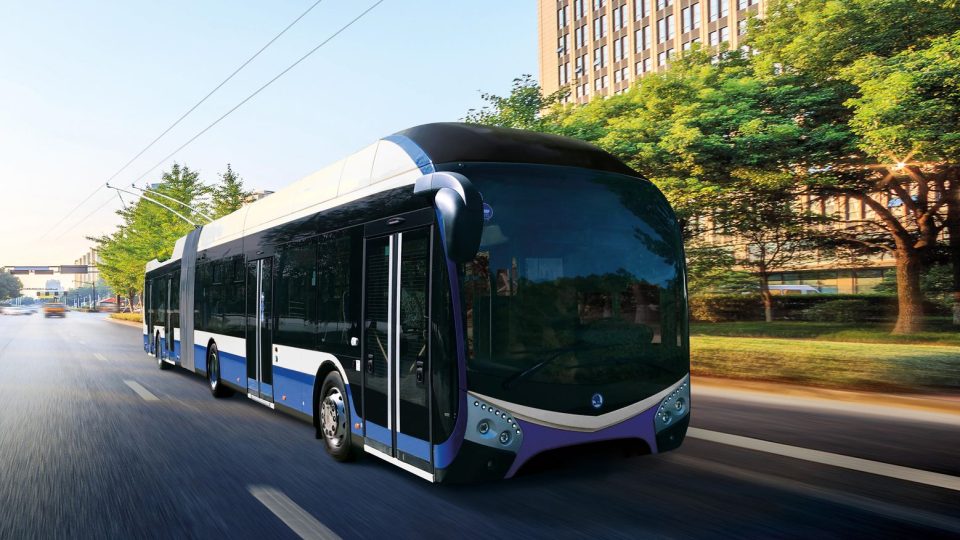Delivery of new capacity trolleybuses to Winterthur begins
Winterthur, a Swiss city of 111.800 inhabitants, the second largest in the canton of Zurich, received on 30 august 2022 the first new trolleybus, model Lightram 25 with a length of 24 metres, by Hess in Bellach. The vehicle, in garish redand-white livery, is already in the Stadtbus Winterthur depot.Despite production difficulties at the time, […]
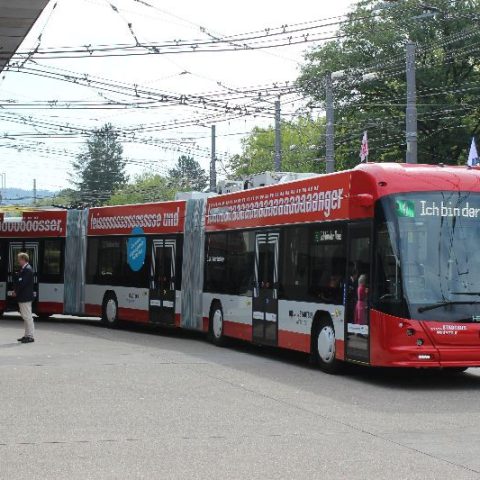
Winterthur, a Swiss city of 111.800 inhabitants, the second largest in the canton of Zurich, received on 30 august 2022 the first new trolleybus, model Lightram 25 with a length of 24 metres, by Hess in Bellach. The vehicle, in garish redand-white livery, is already in the Stadtbus Winterthur depot.
Despite production difficulties at the time, Hess was able to meet the delivery schedule for the confirmed order in 2021.
The vehicle, numbered 401, is the first in a series of 11 (n. 401 – 411), and brings interesting technical innovations to Winterthur network. Unprecedented is the length for the local network, which sees high-capacity trolleybuses for the first time; the floor has been made of plastic instead of wood; the plastic provides greater robustness and protection from breakage. Traction is on the second and third axles, and is provided by two electric motors, each with a power of 190 kW. The vehicle is naturally equipped with batteries for autonomous driving. The high-performance lithium batteries are located on the first element and have a capacity of 66 kWh, enabling the trolleybus to travel up to 25 km in autonomous operation, which is a very high performance result considering the small size and weight of the battery pack (4 kg per passenger). The batteries are also recharged progressively in line with the plug-in rods. Another innovation, the Lightram is equipped with cameras instead of rear view mirrors.
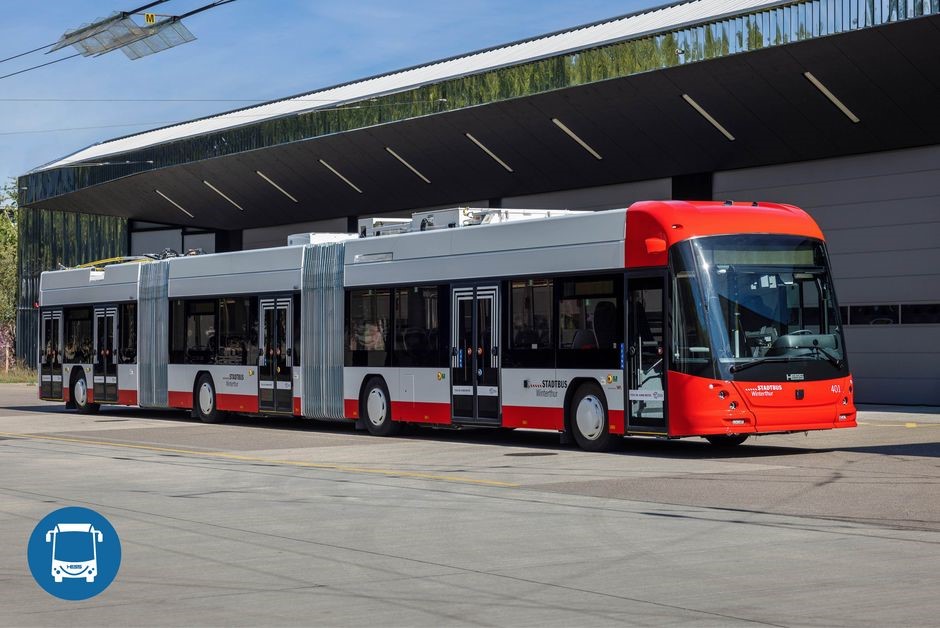
Four large and equidistant doors, in addition to the front half-door, ensure that passengers can get in and out quickly. The number of passengers transported is impressive, exceeding 200. A very elegant vehicle, it certainly allows a further upgrade in the quality of urban transport in the city, which wants to reach the goal of zero-emission transport by 2040. The four trolleybus lines of current network will be joined by Line 5 by 2024 and Line 6 by 2026, operated partly in autonomous operation, which is now possible thanks to the new trolleybuses.
The trolleybus fleet currently consists of 34 articulated trolleybuses (10 Solaris Trollino and 24 Hess) built between 2005 and 2014. The new arrivals will replace the Trollino trolleybuses, which will be sold abroad in early 2023, but will allow for an increase in the fleet, thanks also to the forthcoming arrival of three 18 m. trolleybuses (numbered 131 to 133), which will enlarges the trolleybus fleet (to 41 vehicles), allowing for both an increase in the number of reserve cars and, in the medium term, a reduction in the thermal traction fleet.
The maxi trolleybuses will initially operate on Line 1 (Oberwinterhur-Railway Station-Toss), a heavy-load line, running from 5 a.m. to 1 p.m., with a total journey time of 26-27 minutes on weekdays, 20-25 minutes on Saturdays and holidays, with passages every 10 minutes on average. The increase in capacity and comfort that the new trolleybuses will provide is undoubtedly significant.
The director of Stadt Winterthur, Thomas Niderost, thanked the canton and the city for the purchase of the new trolley buses, anticipating that orders for four more vehicles will be announced in the coming weeks. Already at the beginning of September, the arrival of the second Lightram 25 is planned, and line trials will begin.
Winterthur is the seventh Swiss city, after Geneva, Lausanne, Lucerne, Zurich, St. Gallen and Berne, to adopt the 24-metre high-capacity trolleybuses. An important achievement, confirmed by the excellent performance of these vehicles.



